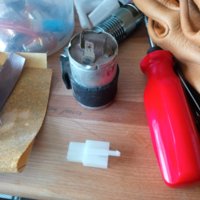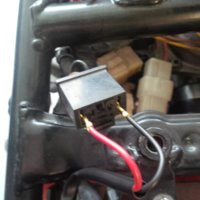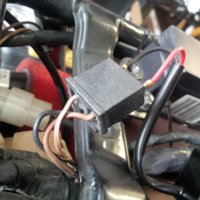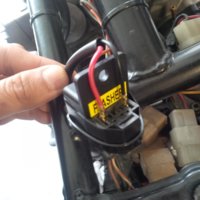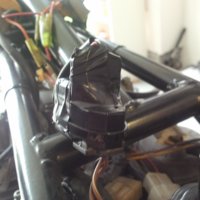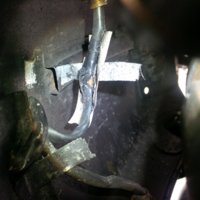The issue that has been expounded on relentlessly, and incorrectly marked Successfully solved by me, was the Timer feature. There is a thread marked Success fully got the flasher turn signals to stop after x-amount of time/distant/speed... I was mistaken, and so was the individual that started that thread. I still hope to spend some time with a decent monitor, and see what type of signal is being sent from the tach, and see if we can come up with a new type of auto cancel feature, for us LED users.
So here is the factoid, (in case you missed it) Right now, if you have everything working per OEM restored... The flasher meaning turn signal on an flashing one side or the other.
Once you switch out the factory relay, you will lose the ability to have the signals turn off on their own. Is it a big deal, nope, but it is something that I tend to "not worry about" when there is other traffic concerns are going on. So my flashers tend to flash for a little bit, till I finally do my look around to see if I am being followed, getting a ticket, or notice the speed/tach readings. Then I will turn it off.
The original turn signal off module is called a Autocancel relay type of device. It takes input from the Tach. Then when one of 2 or 3 conditions is meant, Tach over x amount of RPM's for x amount of seconds ... So that will will send a signal to the relay to turn off the flashing. That device is looking for the combined total of watts being used, to judge when the flasher is on. So now that we have switched to energy saving LED's, we are not using 3.xx amps/watts (whatever its looking for) X2 (front and back) left or right side.
So I think ultimately your still have the energy savings features your looking for, one original bulb verses 4. So your saving 2 to 4 units of electricity. Which I think for most us, we want the bike so that when you hit the brakes, you don't notice the power draw, when the brakes lights are on.
So the next thing(maybe I missed it) The easiest, with no implications upgrade, is just swapping out the LED's into the brake lights.

